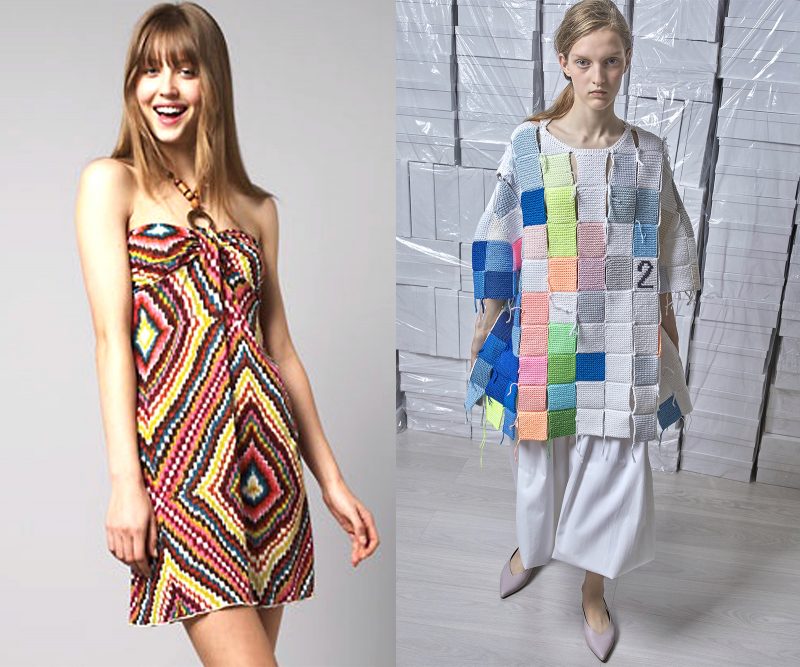
Hi Beth!
I’m writing to ask you a question…
I’ve been wondering how artists can protect the designs and intellectual property of their creative works? It’s no secret here in Philly that a local trendy, multi-million dollar retailer, known for ripping off artists, sniffs around our art and craft venues for “inspiration.” For instance, in 2013, I noticed there was a vendor selling vintage ceramic Phrenology heads at every flea market in the city that summer. When the holidays came around, I wanted to gift one to a friend and I scoured the internet for my options. I was unsurprised when the only two results were eBay and said retail giant, which had come up with the idea to mass produce smaller ceramic versions as banks. This fashion and home goods chain has a longstanding history of stretching the term “inspiration” to artists’ detriment. There are numerous documented cases where they have lazily carbon copied artists’ works and called it their own, greatly endangering the original artisan’s survival. Not to mention that I’ve met former employees who admit this all to be true.
How do I prevent the fruits of my labor from being exploited in Philly?
Thanks!
– Kristin / Emerging, Apprehensive Ceramicist
Hi Kristin, don’t tell me, don’t tell me – it’s Urban Outfitters, no Delias? I feel you. Artists are often taken advantage of in the retail/fashion/design/rich people conglomerate – the main atrocity being that commonly artists are the ones barely getting by to pay their rent.
It’s obvious these larger corporations view us as walking dollar signs with “sucker” printed on our Instagram bios. This is not only a plight for artists in Philadelphia, but all across the board – in some cases – sold-out-art-show – artists stealing from other – not-sold-out-art-show – artists. *cough* Jeanette Hayes *cough* Richard Prince. Pardon me, construction dust. I recall an instance where well-known local Philadelphia street artist Joe Boruchow went up against a manufacturing company, Saint-Gobain, for appropriating one of his works in one of their “immersive marketing installations” touring across the globe and Philadelphia. (I had to directly quote “immersive marketing installations” from them cause give me a break *I’m crying*) While that case seemed to go nowhere for the artist, he was successful with a cease and desist concerning a Peanut Chews advertisement – which was glaringly obvious. Tbh I don’t even like Peanut Chews.
I scroll by artists’ work being stolen often on social media, the internet. I swear this was a couple months ago, but last year, Brad Troemel accused fashion designer Vika Gazinskaya of copying his work in their Spring 2018 fashion line. When confronted online the designer admittedly said they were inspired by Troemel, but seemed to go on like they did not know his name. This is like a bad tumblr thread.
One thing is certain in all these cases, 1. get a lawyer and 2. humiliate them publicly. The lawyer part might not work. Copyright infringement is pretty loose in the U.S. – but the bottom line is if you admittedly use an artists’ work without their permission that’s stealing. Shepard Fairey didn’t get away with it, Richard Prince did, sorry, does – go figure.
<3 Kristin <3, I loved your question so much cause it really got me thinking. The internet has opened up images in a way human beings have never before experienced. I don’t mean to sound like a dinosaur here, but basically – who cares? I actually don’t think originality even exists anymore. Did it ever? The concept seems pretty dumb to me.
Originality is a matter of perspective really. I mean to say if you look from afar, it all looks the same. I’ve created the same art as someone else without realizing it before – all the time. I’m pretty sure all of my artwork has been made or is being made right now by someone else. There’s not one idea I have that was not sourced from somewhere, someone, something – online. Where’s the line? I see similarities all the time. The image is trash. It’s recycled. It’s Postmodern. It’s Street Art. It’s like free candy to corporate fuck-os because it’s basically the same as being an anonymous artist. You don’t need an artist’s permission if you don’t remember their name. If you think you are an original, well, that’s swell. Watermark your images. Speak up, speak out. If you’re like me, a trash artist, give credit to the artists whose work you’re recycling – that includes Anime artists. Appropriation comes with that responsibility.
In other words, Kristin, you can’t prevent it, but you can sue it.
Thanks for writing to us <3
Best,
(I’ll Use Parenthesis If I Want To) Beth





